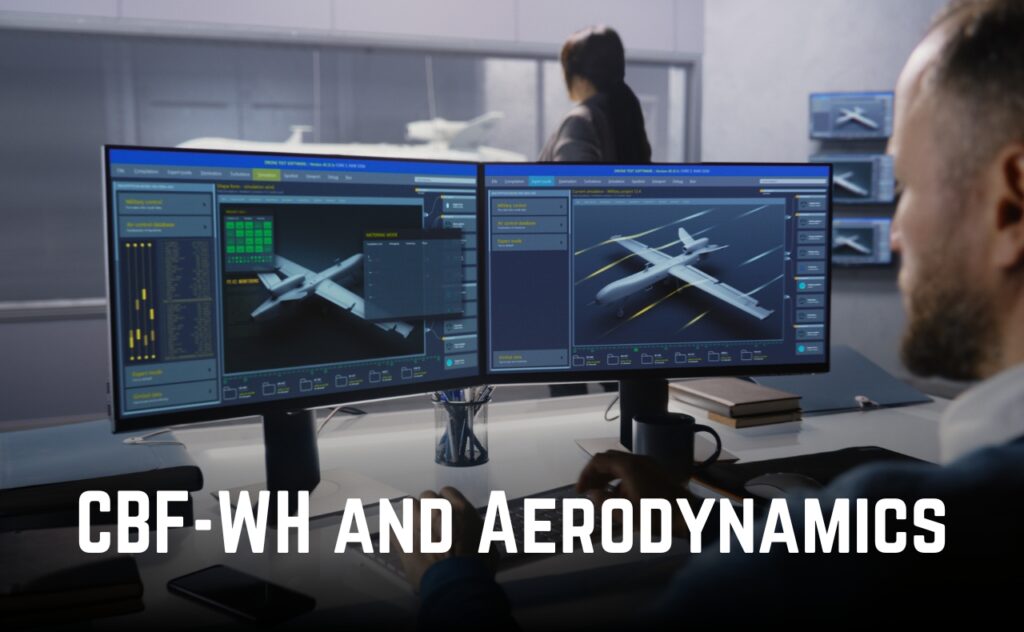Unlocking Aviation Potential with CFBWH Technology

Aviation has constantly been a melting pot for innovation as it continues to outperform the world in its quest for faster, more efficient, and sustainable air travel. The problem that persists is due to intensifying pressure on the industry concerning environmental aspect reductions and operational efficiencies. The answer would come through newly emerging technologies. One of the breaks is in the CFBWH technology, Carbon Fiber Braced Wing-Hinge, which promises to transform aviation by offering better aircraft performance fuel efficiency, and sustainability. We delve into this article to explore the high potential of CFBWH technology and its impact on the aviation industry from aerodynamics to data analytics in real time.
What is CFBWH Technology?
The CFBWH, short for Carbon Fiber Braced Wing-Hinge, is an innovation in aircraft design and materials engineering. Here, carbon fiber, a lightweight yet incredibly strong material, is incorporated into the aircraft wing structure. By using carbon fiber for the wing’s braces and hinges, aircraft designers can create more flexible wings, improving aerodynamics by reducing drag and in general making the aircraft more efficient to fly.
It is the central principle of CFBWH technology combining carbon fiber strength-to-weight ratio and a capacity to fine-tune wing flexibility, thus implementing aircraft wings that can dynamically change conditions vis-à-vis flight conditions, thus improving fuel efficiency and also overall aircraft performance.
CBF-WH and Aerodynamics

Aerodynamics is a performance-critical component of aircraft. The more aerodynamically efficient an aircraft can be, the less fuel it will burn and the fewer emissions it will generate. CFBWH technology addresses this challenge by smoothing airflow so that drag forces are minimized, and wings can articulate and move with the airflow, leading to smoother, more efficient flight patterns.
The traditional wings are heavier, usually made of aluminum, and less flexible, which may increase drag, efficiency, and in the end, fuel consumption. Carbon fiber braces and hinges at CFBWH allow flight adjustments of wings as flown to minimize air resistance in real-time during the flight. This flexibility changes everything in aircraft as flights become smoother, quieter, and more fuel-efficient.
Fuel Efficiency and Environmental Impact
One of the most significant advantages of CFBWH technology is its impact on fuel efficiency. Fuel accounts for a significant portion of operational costs in aviation. With rising fuel prices and growing pressure to reduce carbon footprints, improving fuel efficiency is one of the industry’s key objectives.
CFBWH reduces aircraft drag by making wings lighter and more aerodynamic, thus reducing overall aircraft weight, which facilitates a reduction in fuel consumption. The flexibility of the wing design allows the aircraft to glide more efficiently through the atmosphere, so much less energy is required from the engines. Therefore, the design creates greater cost savings for airlines and reduces their environmental impact.
With its ability to lower fuel usage and subsequently carbon emissions, CFBWH technology directly contributes to the sustainability goals of the aviation industry. As this sector of the global aerospace industry seeks to adhere to strict regulations on environmental requirements, optimizing fuel consumption through CFBWH technology epitomizes a step towards a greener future in air travel.
Real-time Data Analytics and Insights
Another transformative aspect of CFBWH technology is its integration into real-time data analytics. While this technology enhances aircraft aerodynamics and fuel efficiency, it also utilizes the strength of real-time data-based insights, which is imperative to flight operations and maintenance planning.
CFBWH-equipped aircraft can continuously measure performance, thus monitoring in flight the most efficient wing operation, the rate of fuel consumption, and others. Now, for a flight, airlines make optimized decisions in real-time, based on derived parameters, such as flight route, and altitude, which help them decrease fuel consumption.
Furthermore, real-time data analytics can enhance predictive maintenance. With constant monitoring of structural integrity, airlines can address potential issues before they become serious problems, reducing maintenance costs and increasing the safety and reliability of aircraft. This also leads to fewer delays, as preventive measures can be taken in advance.
CFBWH Tail Number: Tracking Aircraft Efficiency
One way the CFBWH technology uses real-time data is by tracking the tail number of every aircraft. Every airplane in the fleet has a unique identifier, which is the tail number. Through the technology, specific data on the performance of the individual aircraft can be collected such that efficiency and consumption of fuel by the aircraft are continually monitored and optimized.
By analyzing real-time data from specific CFBWH-equipped planes, airlines can assess performance over time, make adjustments, and refine flight routes and schedules to maximize fuel savings. This data-driven approach to aviation operations is vital in reducing costs and improving overall airline performance.
Flight into the Future: CFBWH’s Role in Next-Generation Aircraft Design
The future of aviation, therefore, sees the enormous involvement of CFBWH technology in the design of future aircraft. That carbon fiber could one day be used to create an aircraft wing is only a starting point. Future designs of aircraft will maximize the flexibility and lighter weight characteristics of CFBWH to build aircraft that are faster, more efficient, and more environmentally friendly.
In the future, we can envision shapes of wings that are even more unusual, and optimally designed for maximum aerodynamic efficiency. The wings might include structures that can adapt to the flying conditions and automatically change – and thus help cut down fuel use while improving performance for even greater savings. It may mean a new epoch in aviation, where aircraft are not only more efficient but also faster and quieter.
This technology will also allow for further innovations in aircraft interiors since the weight reduction may ultimately lead to wider cabins and more passenger-friendly features. Probably, more comfortable flights with added amenities might become standard, thus providing passengers with better travel experiences.
Challenges for Widespread Acceptance of CFBWH Technology
Although CFBWH technology is full of promise, there are various obstacles to its widespread application. First of all, it is very expensive to make carbon fiber. Compared to more traditional materials, such as aluminum, carbon fiber manufacturing is pricier. This might make the manufacture of some aircraft equipped with CFBWH costly at first, which is a barrier to adoption for some airlines.
Another challenge is the approval of regulatory agencies. Since new technology, CFBWH is applied for the first time to commercial aviation, it must meet the most severe safety standards. This requires many complex tests and verifications, which consume a lot of time and resources.
However, carbon fiber production techniques will become easier and cheaper. Costs for CFBWH technology will go down.
Progressively, more airlines, once it is clear the benefits of using the technology, are likely to embrace the technology in the years to come.
Conclusion: The Future Aviation is Powered by CFBWH
The technology of CFBWH unlocks the true potential of aviation that was hidden behind aerodynamics, efficiency in terms of fuel, and contribution to sustainable goals. With its integration into aircraft design and real-time data analytics, CFBWH is not just a technological advancement-it’s a paradigm shift promising to redefine air travel. As efficiency, performance, and sustainability steer the industry toward these aims in the future, CFBWH will be the one to shape the coming aircraft generations.
From real-time data insights to improved fuel efficiency and smarter flight operations, using CFBWH technology will allow airlines to meet the ever-increasing passengers’ demands while facing the challenges of the contemporary world. Looking into the future, it is quite evident that CFBWH is key to unlocking a more efficient, sustainable, and innovative aviation industry.
By embracing the full potential of CFBWH technology, the aviation industry will not only fly into the future but soar toward a more efficient and environmentally responsible tomorrow.
